Fringe Legal #35: what can the Mars landing teach legal teams?

It's been a busy week, so please excuse the delay in getting this newsletter out. I connected with so many awesome people this week, and I'm working on getting a number of these conversations recorded and share them with you all - more to come soon.
In the meantime, this edition of the newsletter is on the longer side. Best enjoyed with a hot beverage ☕ or some 🍷.
💡 Lessons from the Perseverance

Last week saw the Perseverance Rover make its approach and successful landing on the red planet. For a space nerd like me, this is an awesome achievement.
As I watched the video of the NASA/JPL team monitor situation from 132 million miles away, here are three lessons I took away:
- Seven minutes of terror: the entry, descent, and landing phase of the martian landing are referred to as seven minutes of terror. So-called because it happens faster than radio signal can reach Earth, and as a result, the spacecraft is on its own. To make this is possible the teams mut think through all possible things that might go wrong, before the launch or during the 6.5-month journey from Earth to Mars. Once you know this, it becomes possible to program contingencies and instructions on how to handle the situation autonomously. Learnings: for projects/transactions/conversations, thinking about different outcomes is important to prepare. Think about extreme scenarios and bring in experts and those who are not close to the matter to identify blind spots.
- The importance of checklists: it was amazing (though not surprising) how everything was checklist-driven. Each step must be confirmed-done before the next. It offers disciple, control, and to be prepared should things go wrong. Learnings: there is a reason checklists are a critical tool for pilots, doctors, and in the practice of law. In legal work, I see lists used for some things (e.g., transactions) but not so much for other peripheral processes (selecting tech, for example). For effective checklists, you must understand the process behind the work.
- Unintended benefits of focused innovation: since the 1960s, when we first started exploring Mars, many innovations that made exploration possible have also found use in closer-to-home activities. This includes methane-leak detectors, tech for autonomous navigation, materials for heart surgeries, and more. Learnings: as you find ways to solve the problem at hand, what else could those innovations be used for?
P.S. If you're interested - check out the video of the landing from the shuttle's point of view, and listen to the eerie audio from the surface of Mars on the NASA website.
🎧 Increasing value to clients
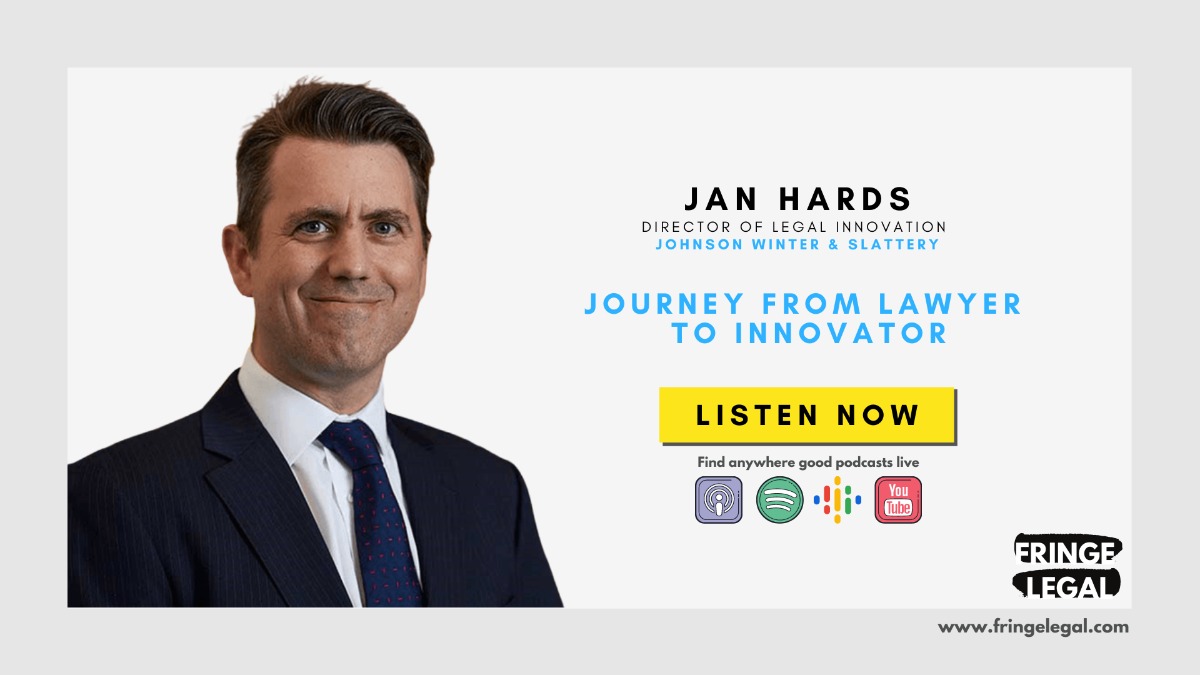
The most recent episode of the podcast is the conversation with Jan Hards - Director of Legal Innovation for Australian firm Johnson Winter & Slattery.
We had this conversation mid-last year, but the learnings are equally applicable (for me, even more so). During the conversation, we cover several topics, including:
- Jan's deliberate move from lawyer to innovator;
- JWS' five innovation objectives; and,
- How JWS leverages innovation teams to add value to clients.
Here's just one snippet:
The other thing I'm doing, which I find very interesting is trying to think about the ways that we can improve the product or the service we provide.
So we work in a very competitive industry and, we have very able competitors who are providing excellent services... But it's trying to go beyond that and think more carefully about the way that we deliver services to our clients. What are they going to do with the product of our work?
If it's a transaction, it's typical for a law firm to provide transaction volume (or in some jurisdictions called a bible or transaction set). Can we do more than that? Can we provide the information in a way that the client can better use it internally? And of course, that gives us opportunities as well to have further engagement with that client.
Rather than just giving them the information in a way they then need to take it away and digest it, and dissector to reorganize it. Work more closely with clients to say: 'what are you ultimately doing with this information?' Who is it going in your organization? It's probably going beyond the internal legal team to certain business teams, at that client. And so providing information to them in a form that can just be pushed straight to the people who need it.
Access the full episode: audio-only with transcript, or watch the video.
💭 Change and adoption
Previously, I posted a graphic that differentiated change vs. transformation (if you missed it, find it here).
Kate Simpson requested I attempt one for change and adoption:
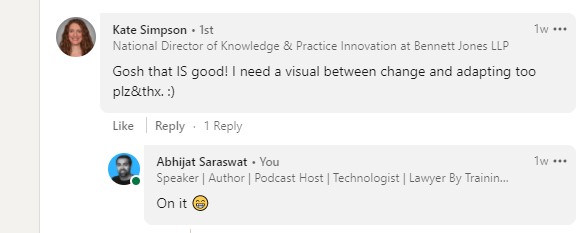
Not to shy from a challenge, I gave it a go. This is my perspective of how I see change, adoption, and innovation all fitting together. (HT to Priti Saraswat and Leslie Balcer for their input).
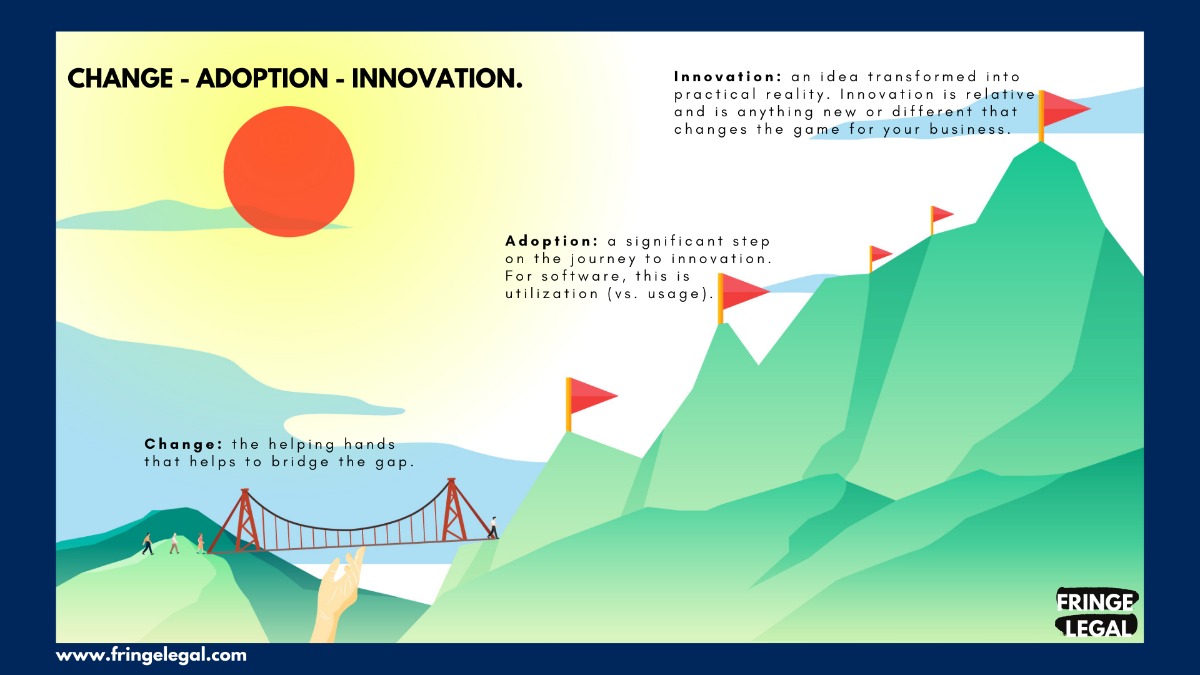
What do you think? Dissenting views always welcome.
🔗 Legal lookbacks
Legal lookbacks is a safe, anonymous space for lawyers to share mistakes to reverse the culture of hyper-perfectionism. What I love is that the mistakes offer learnings to encourage a growth mindset.
From their website:
We know being a lawyer demands excellence and hard work. While this attitude can deliver great results, it can also turn us into hyper-perfectionists - unwilling to embrace mistakes and less resilient in the face of stress.
No matter how 'right' we want to be all the time, we're going to be wrong at least some of the time. And when mistakes inevitably happen, research indicates that constructively engaging with your mistakes is a tremendously powerful way to learn.
Here's a sample:
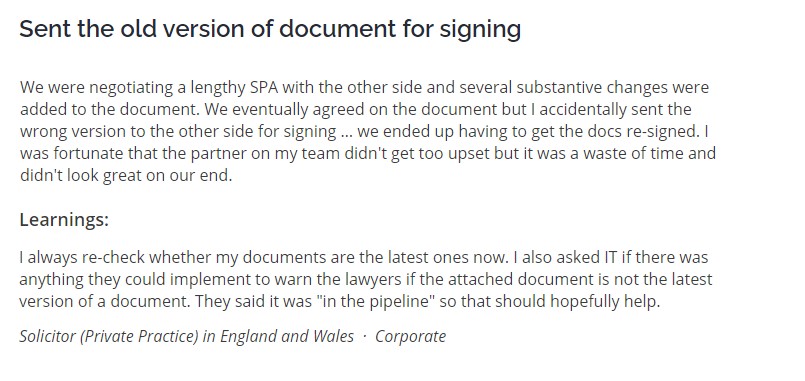
Discovered via David Bushby's awesome newsletter InCounsel Weekly.
How did you like this article?




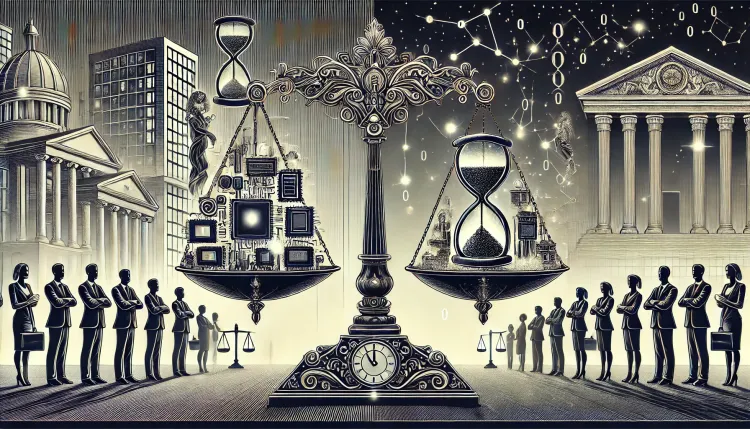

Become a Fringe Legal member
Sign in or become a Fringe Legal member to read and leave comments.
Just enter your email below to get a log in link.